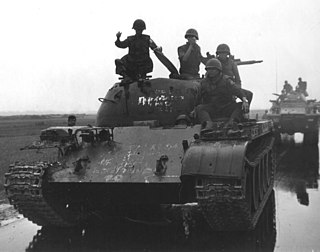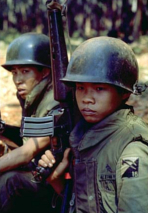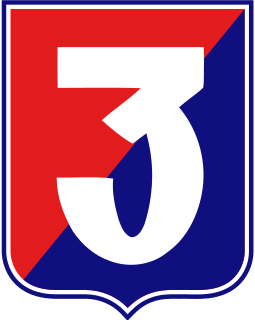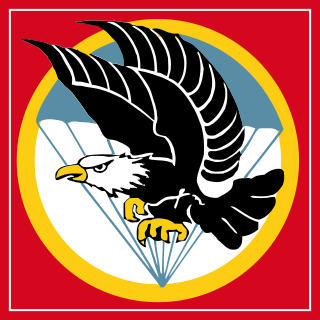
The Army of the Republic of Vietnam were the ground forces of the South Vietnamese military from its inception in 1955 to the Fall of Saigon in April 1975. It is estimated to have suffered 1,394,000 casualties during the Vietnam War.

The Easter Offensive, officially known as The 1972 Spring - Summer Offensive by North Vietnam, or Red fiery summer as romanticized in South Vietnamese literature, was a military campaign conducted by the People's Army of Vietnam against the Army of the Republic of Vietnam and the United States military between 30 March and 22 October 1972, during the Vietnam War. This conventional invasion was a radical departure from previous North Vietnamese offensives. The offensive was designed to achieve a decisive victory, which even if it did not lead to the collapse of South Vietnam, would greatly improve the North's negotiating position at the Paris Peace Accords.

The Battle of Xuân Lộc was the last major battle of the Vietnam War. From the beginning of 1975, People's Army of Vietnam (PAVN) forces swept through the northern provinces of South Vietnam virtually unopposed. In the Central Highlands, South Vietnam's II Corps was completely destroyed, whilst attempting to evacuate to the Mekong Delta region. In the cities of Huế and Da Nang, ARVN units simply dissolved without putting up resistance. The devastating defeats suffered by the Army of the Republic of Vietnam (ARVN) prompted South Vietnam's National Assembly to question President Nguyễn Văn Thiệu's handling of the war, thereby placing him under tremendous pressure to resign.

Bien Hoa Air Base is a Vietnam People's Air Force military airfield located in South-Central southern Vietnam about 25 km (16 mi) from Ho Chi Minh City, across the Dong Nai river in the northern ward of Tân Phong, and within the city of Biên Hòa within Đồng Nai Province. The boomburb city is densely populated and rings the base, despite significant levels of agent orange toxins simply left there for decades. The base is scheduled to begin cleanup by 2019.
The 1975 Spring Offensive or officially known as The General Offensive and Uprising of the Spring 1975 was the final North Vietnamese campaign in the Vietnam War that led to the capitulation of South Vietnam. After the initial success capturing Phước Long Province, the North Vietnamese leadership increased the scope of the People's Army of Vietnam's (PAVN) offensive and captured and held the key Central Highlands city of Buôn Ma Thuột between 10 and 18 March. These operations were intended to be preparatory to launching a general offensive in 1976.

The First Battle of Quảng Trị resulted in the first major victory for the People's Army of Vietnam (PAVN) during the Easter Offensive of 1972. Quảng Trị Province was a major battleground for the opposing forces during the Vietnam War. As South Vietnamese soldiers were gradually replacing their American counterparts, North Vietnam's General Văn Tiến Dũng was preparing to engage three of his divisions in the province. Just months before the battle, the Army of the Republic of Vietnam (ARVN) deployed its newly formed 3rd Division to the areas along the Vietnamese Demilitarized Zone (DMZ) to take over former US bases. North Vietnamese forces deployed against the inexperienced ARVN 3rd Division included the PAVN 304th, 308th and 324B Divisions.

The 18th Division was an infantry division in the III Corps of the Army of the Republic of Vietnam (ARVN). The U.S. Military Assistance Command Vietnam considered the 18th as undisciplined and it was well known throughout the ARVN for its "cowboy" reputation. In 1975 the 18th was made famous for its tenacious defense of Xuân Lộc, the last major battle before the Fall of Saigon.

The Republic of Vietnam Marine Division was part of the armed forces of South Vietnam. It was established by Ngo Dinh Diem in 1954 when he was Prime Minister of the State of Vietnam, which became the Republic of Vietnam in 1955. The longest-serving commander was Lieutenant General Le Nguyen Khang. In 1969, the VNMC had a strength of 9,300, 15,000 by 1973., and 20,000 by 1975.

The Vietnamese Rangers, properly known in Vietnamese as the Biệt Động Quân (En:Commando) and commonly known as the ARVN Rangers, were the light infantry of the Army of the Republic of Vietnam. Trained and assisted by American Special Forces and Ranger advisers, the Vietnamese Rangers infiltrated beyond enemy lines in search and destroy missions. Initially trained as a counter-insurgency light infantry force by removing the fourth company each of the existing infantry battalions, they later expanded into a swing force capable of conventional as well as counter-insurgency operations, and were relied on to retake captured regions. Later during Vietnamization the Civilian Irregular Defense Group program was transferred from MACV and integrated as Border Battalions responsible for manning remote outposts in the Central Highlands.

The 1st Division of the Army of the Republic of Vietnam (ARVN)—the army of the nation state of South Vietnam that existed from 1955 to 1975—was part of the I Corps that oversaw the northernmost region of South Vietnam, the centre of Vietnam.

The 3rd Division of the Army of the Republic of Vietnam (ARVN)—the army of the nation state of South Vietnam that existed from 1955 to 1975—was part of the I Corps that oversaw the northernmost region of South Vietnam, the centre of Vietnam.

The Vietnamese Airborne Division(Binh chủng Nhảy dù Việt Nam Cộng hòa) was one of the earliest components of the Republic of Vietnam Military Forces. The Vietnamese Airborne Division began as companies organized in 1948, prior to any agreement over armed forces in Vietnam. After the partition of Vietnam, it became a part of the Army of the Republic of Vietnam. This division had its distinct origins in French-trained paratrooper battalions, with predecessor battalions participating in major battles including Dien Bien Phu and retained distinct uniforms and regalia. With the formation of an independent republic, the colonial paratroopers were dissolved, however regalia and aesthetics alongside the nickname "Bawouans" would be retained.
The 324th Division is an infantry division of the People's Army of Vietnam (PAVN) assigned to the 4th Military Region.
The 320th Division or Đồng Bằng Division is a formation and one of the six original "Steel and Iron Divisions" of the People's Army of Vietnam (PAVN). It was established in January 1951.
The VC 5th Infantry Division was a division of the Viet Cong during the Vietnam War and later became part of the People's Army of Vietnam.
The 304 Division is an infantry division of the People's Army of Vietnam (PAVN). It was established in January 1950 at Thanh Hoa.
The 7th Infantry Division is a division of the People's Army of Vietnam (PAVN).

Cửa Việt Base is a former U.S. Marine Corps, U.S. Navy, U.S. Army and Army of the Republic of Vietnam (ARVN) base north of Quảng Trị in central Vietnam.

Operation Napoleon/Saline was a multi-Battalion operation conducted by the United States Marine Corps and the United States Army along the Cửa Việt River south of the DMZ in Quảng Trị Province. The operation ran from 20 January to 9 December 1968.

The Battle of Dai Do took place from 30 April to 3 May 1968 in Quảng Trị Province during the Vietnam War.













